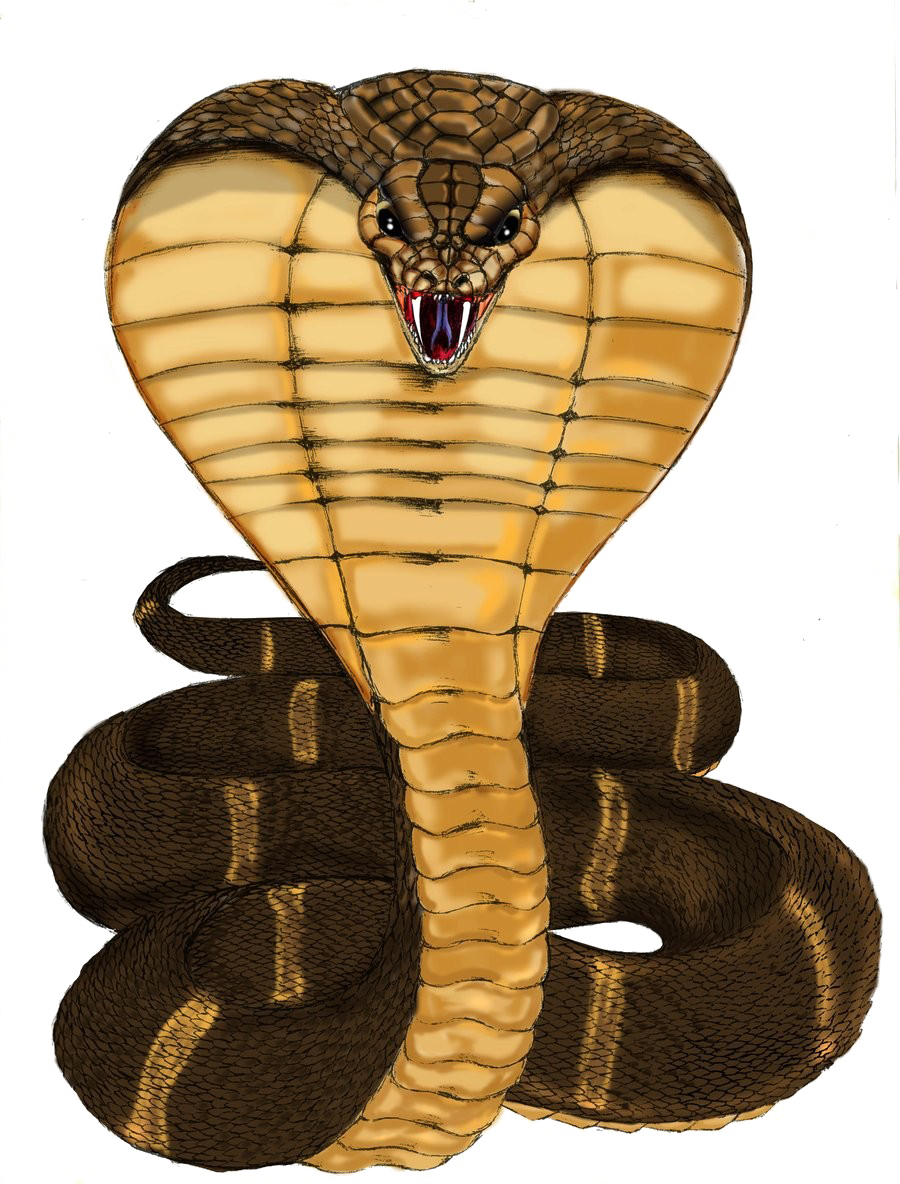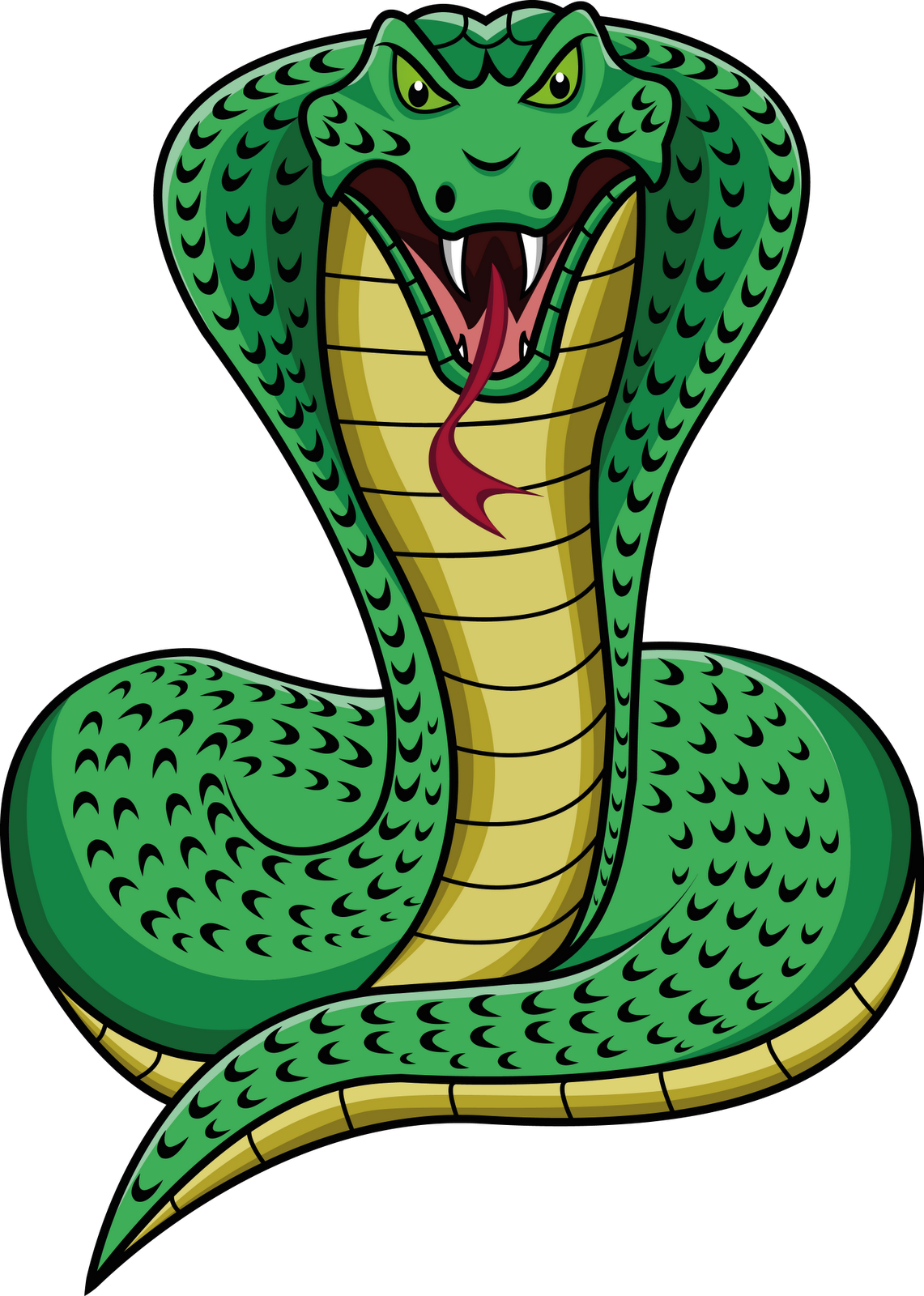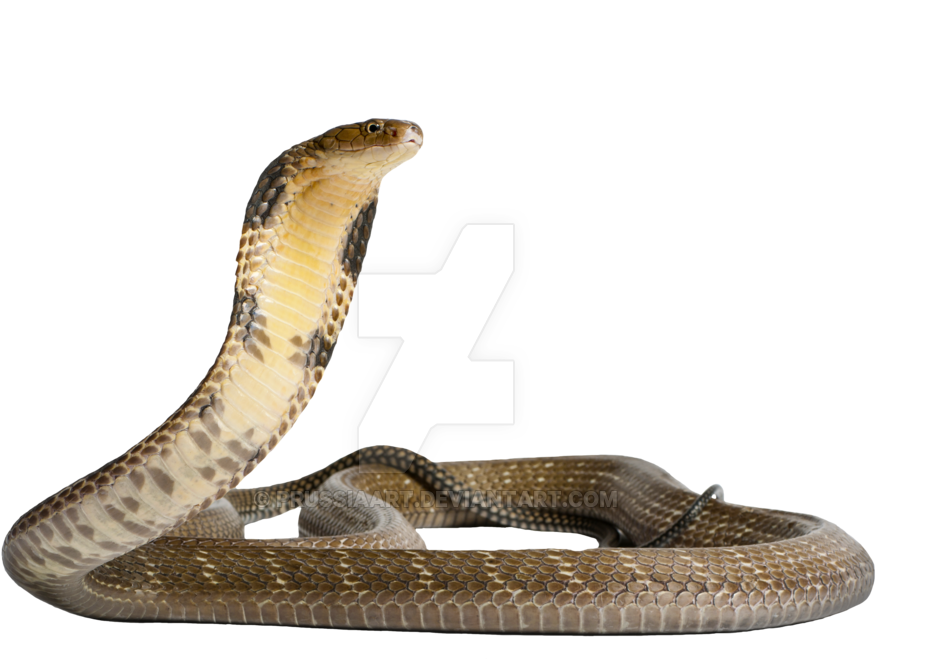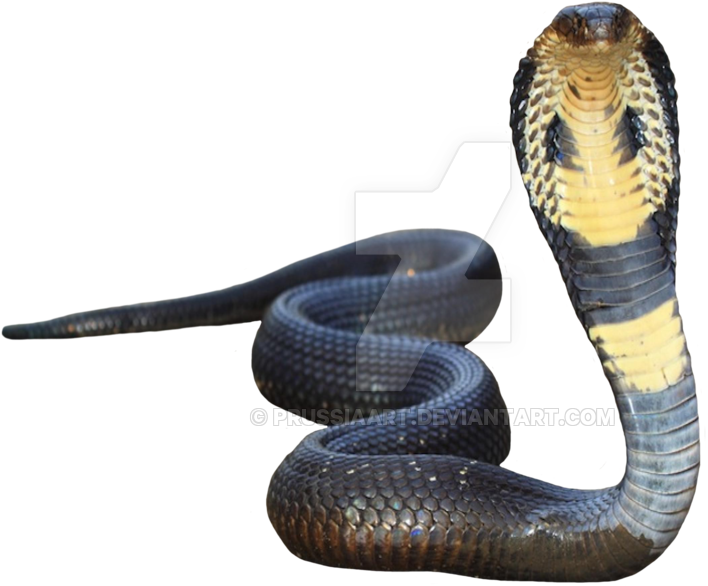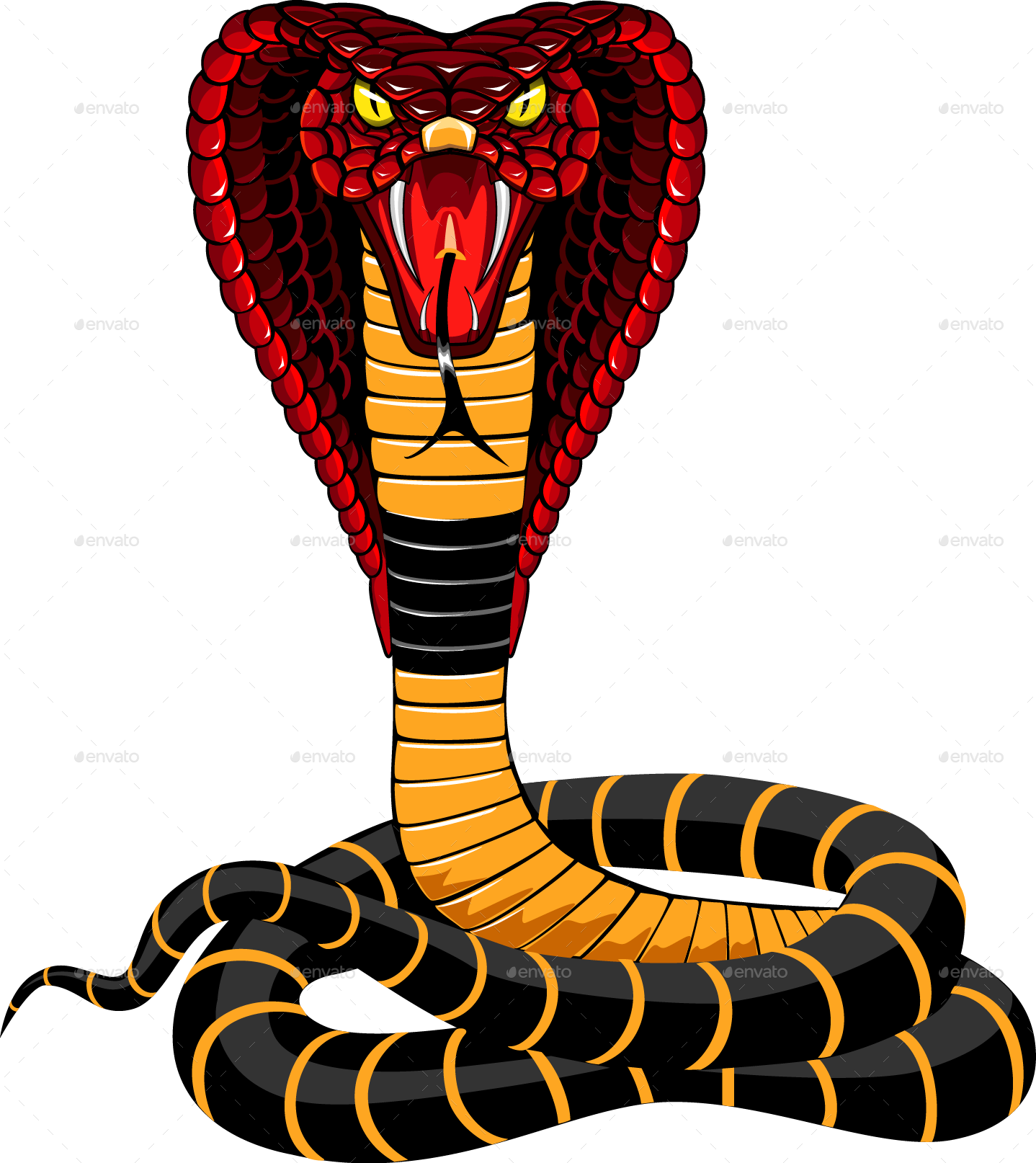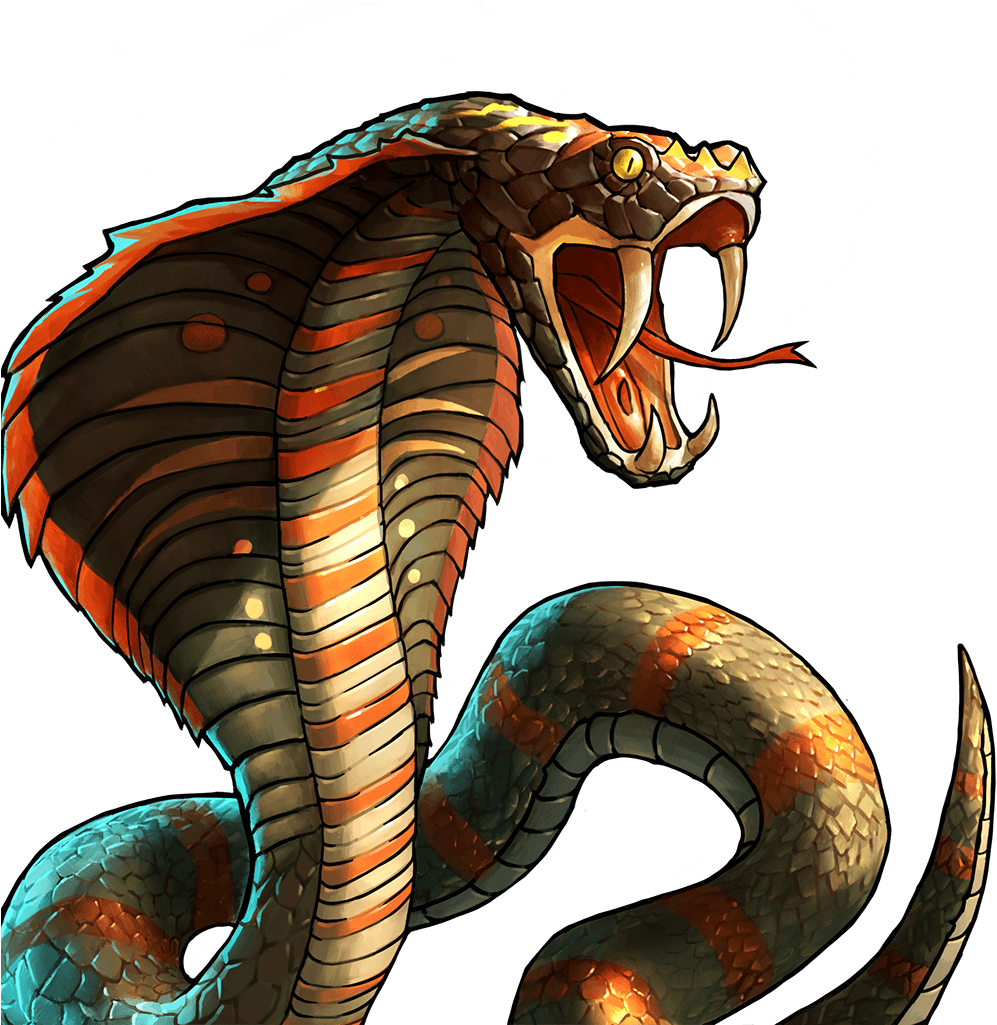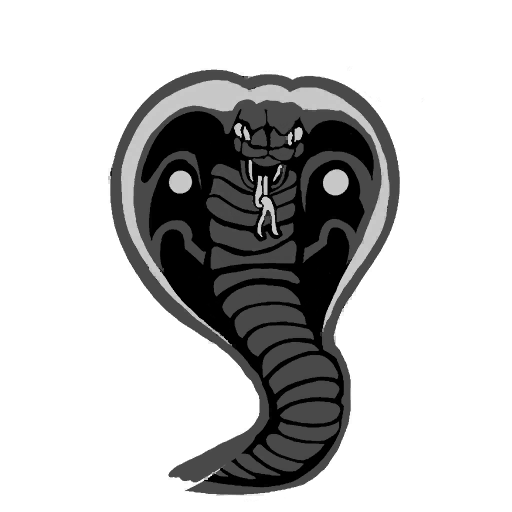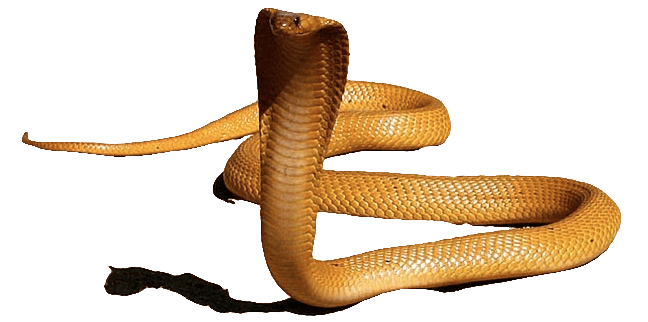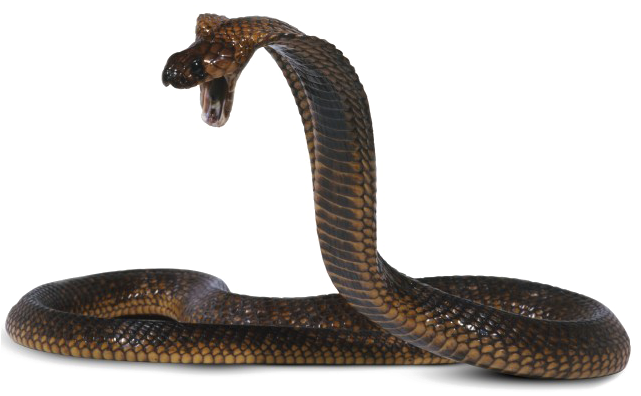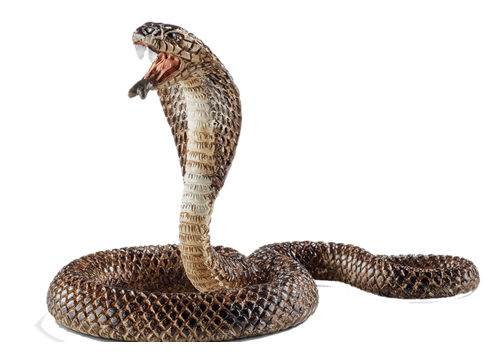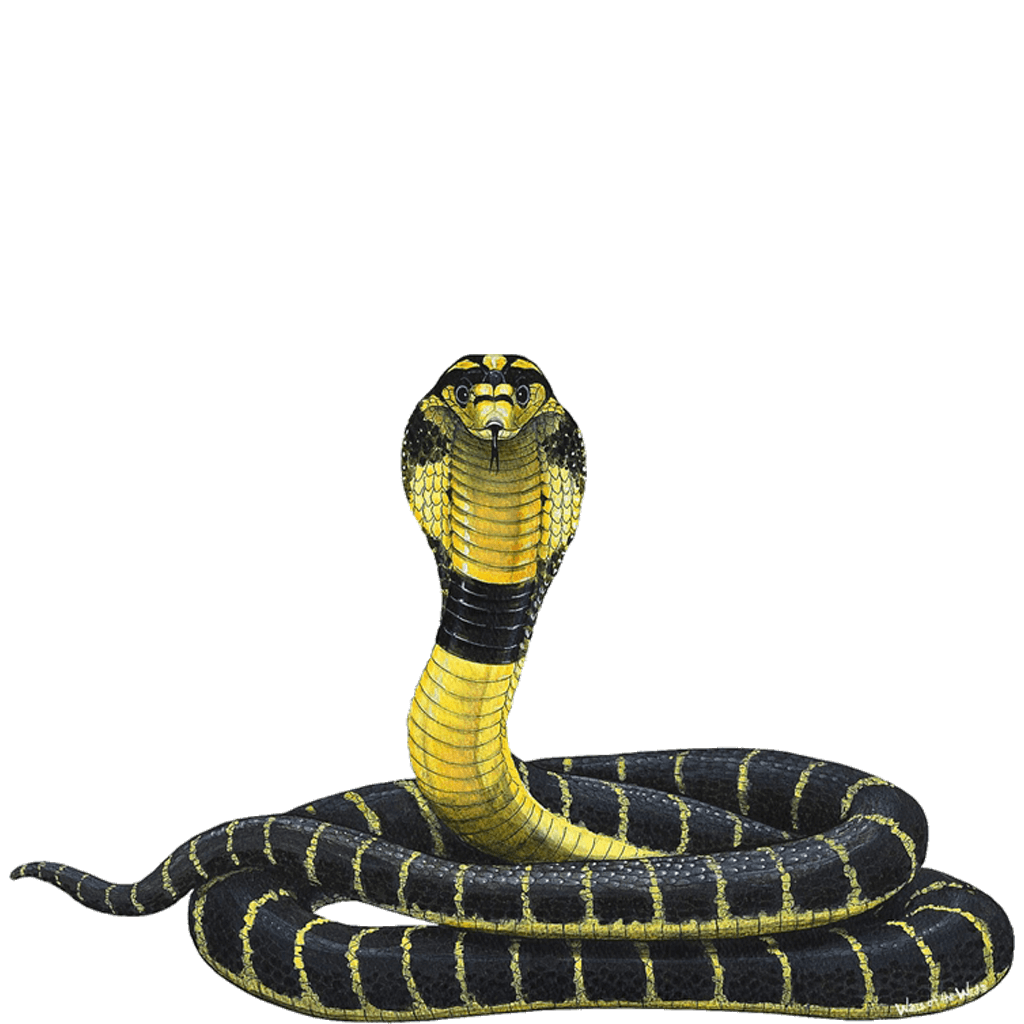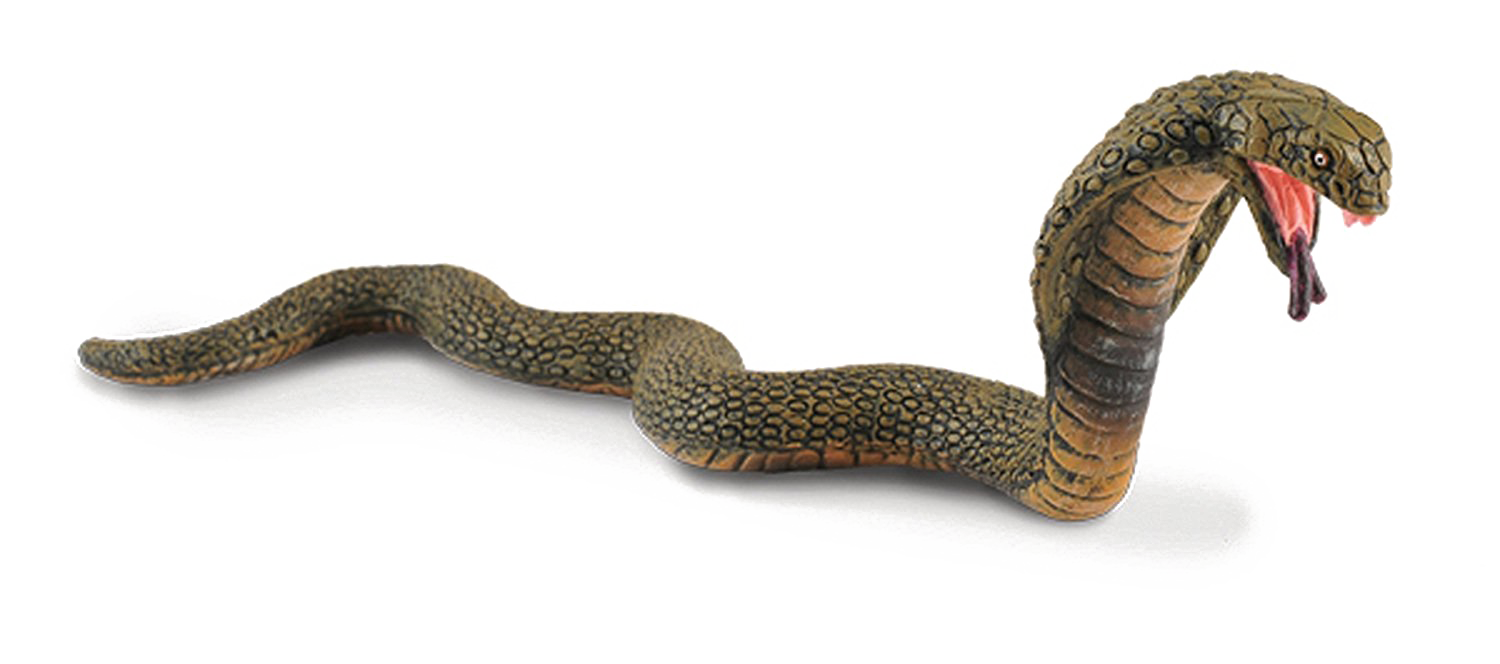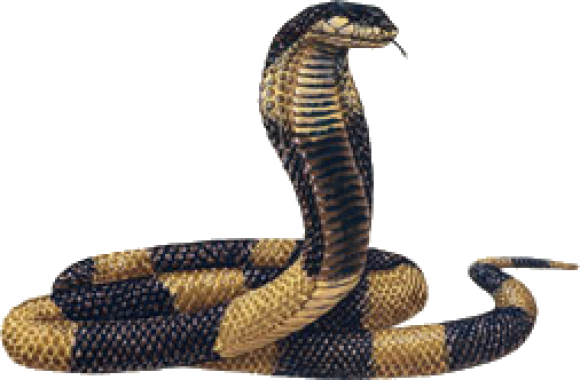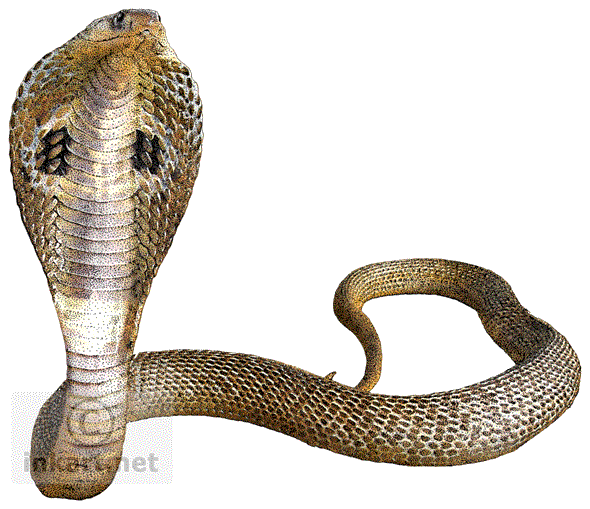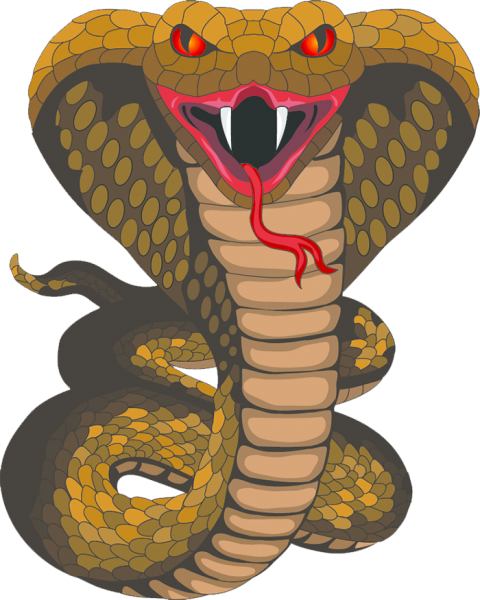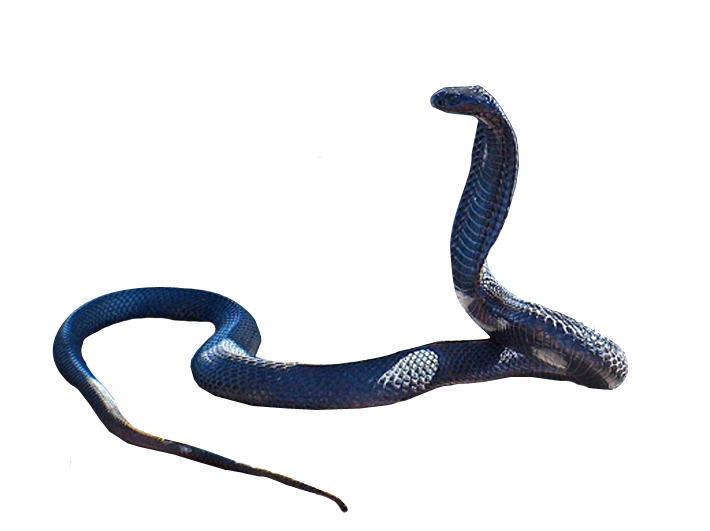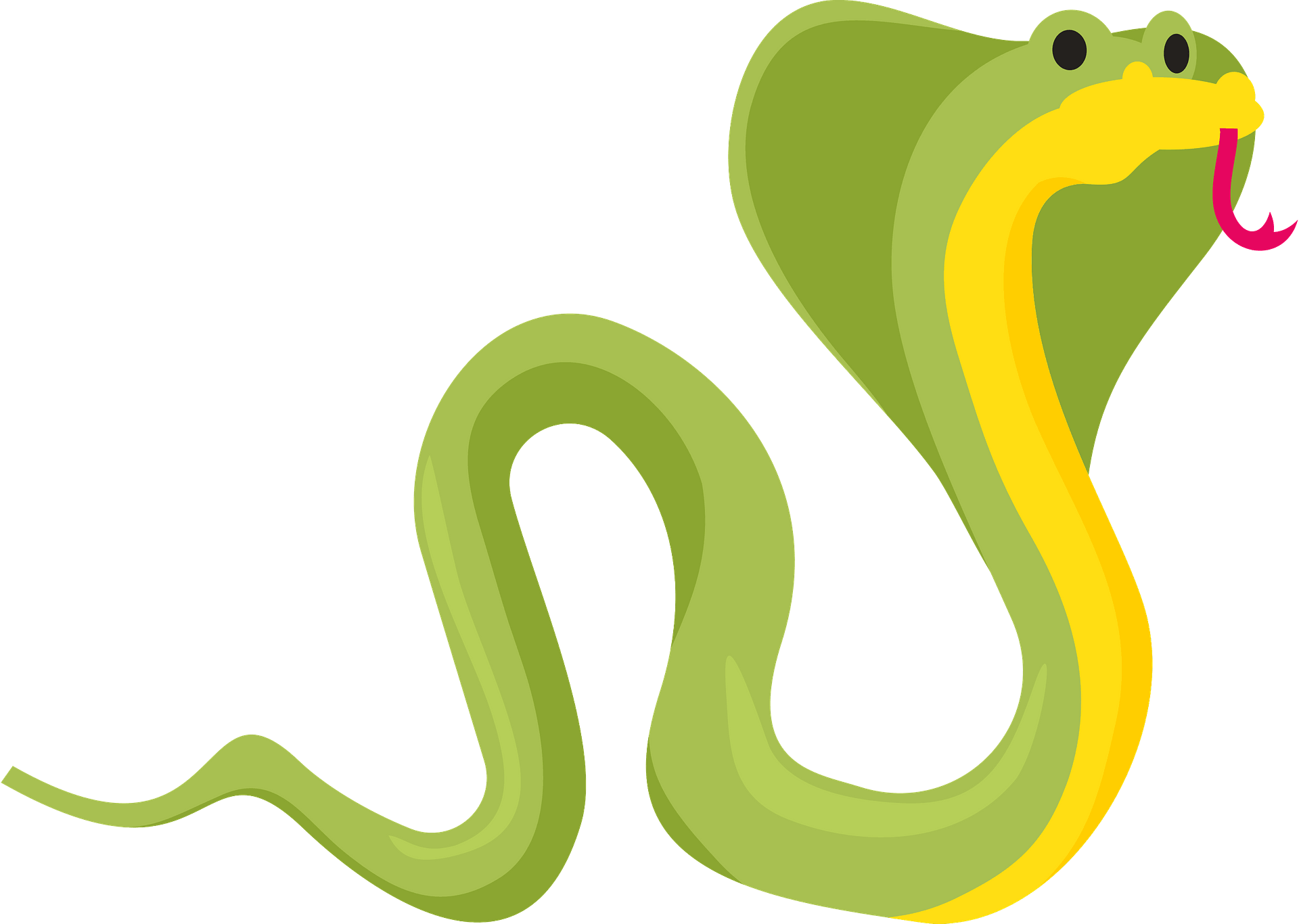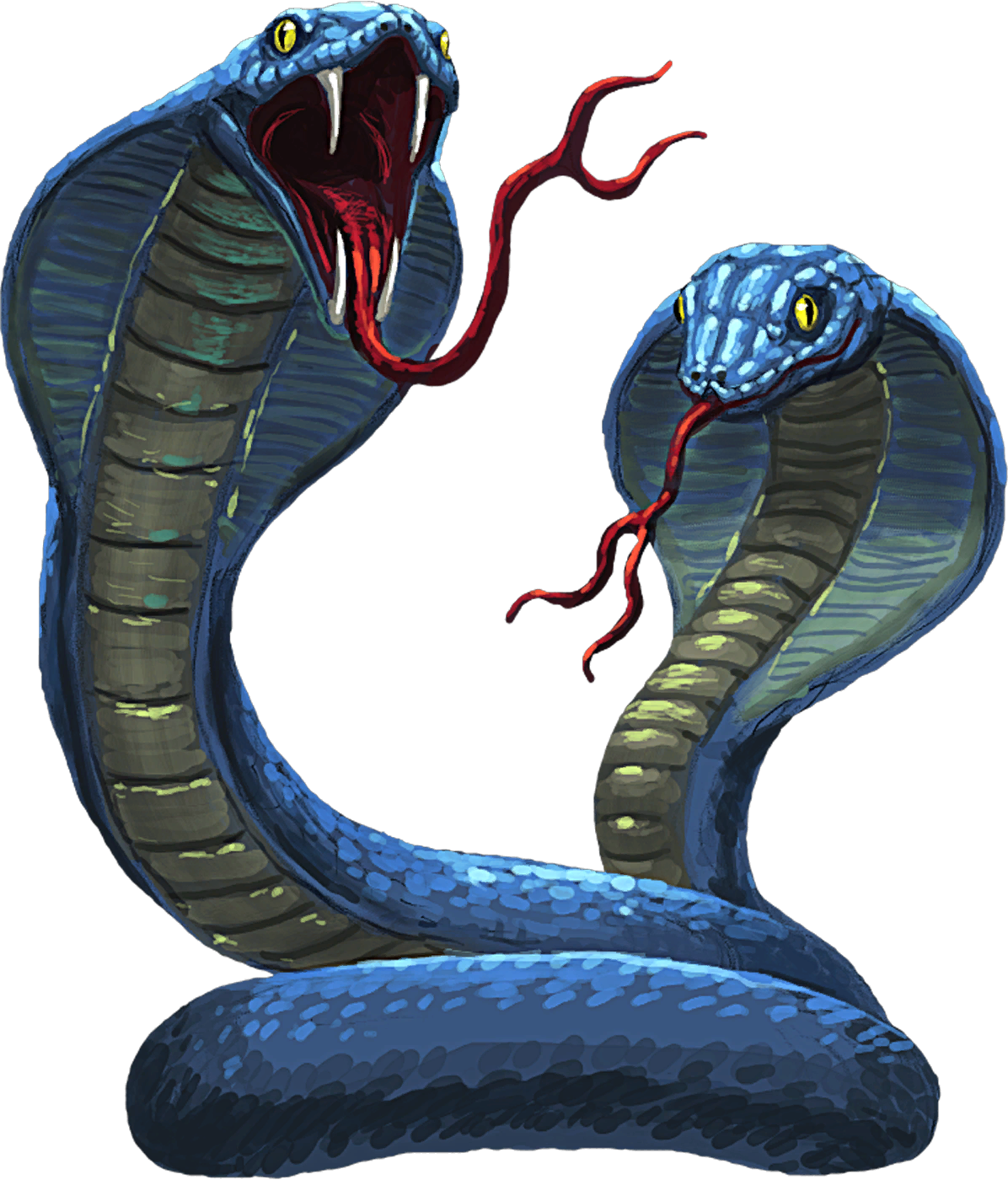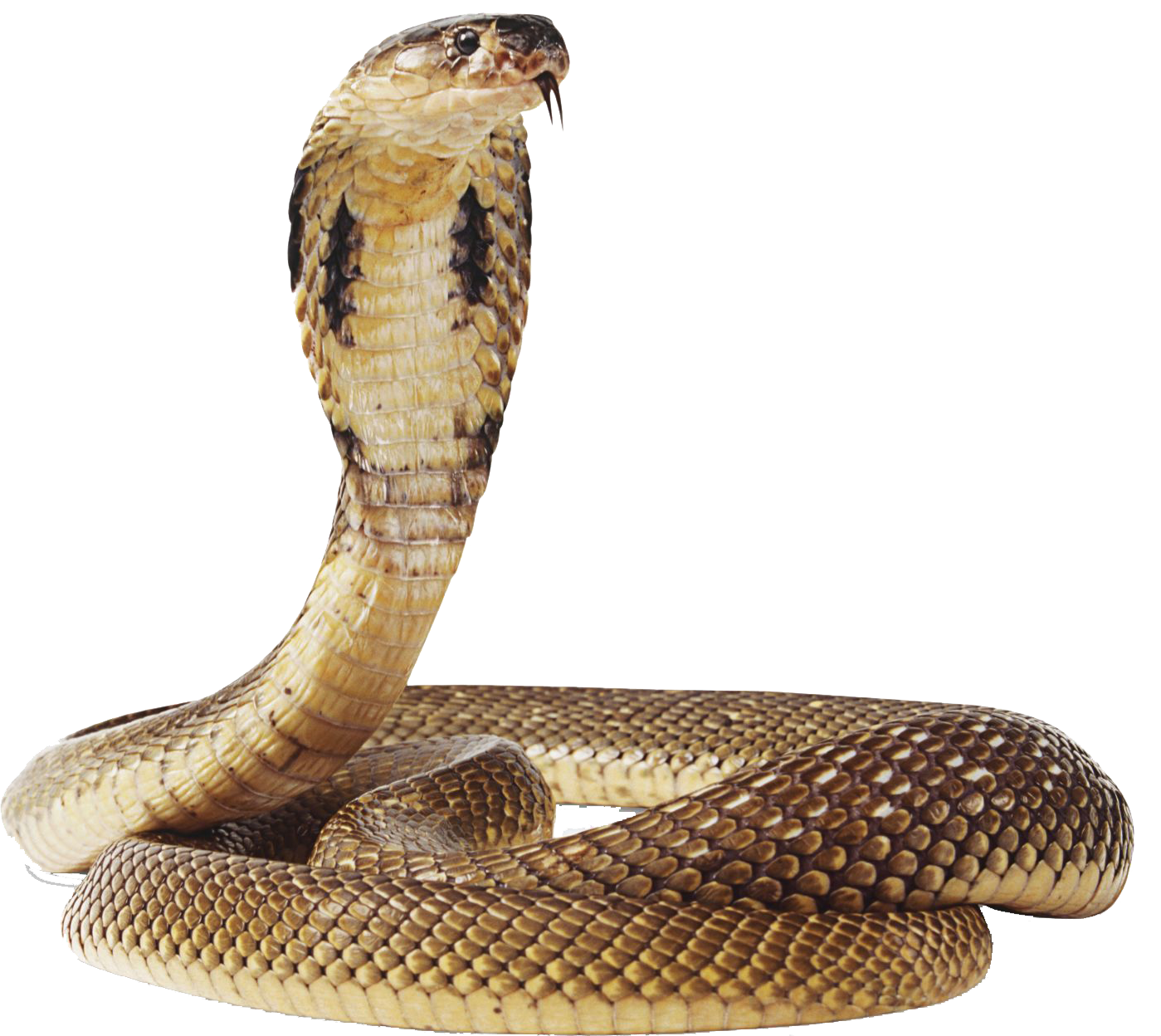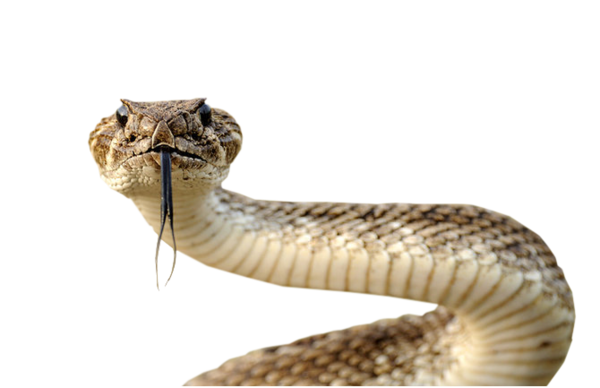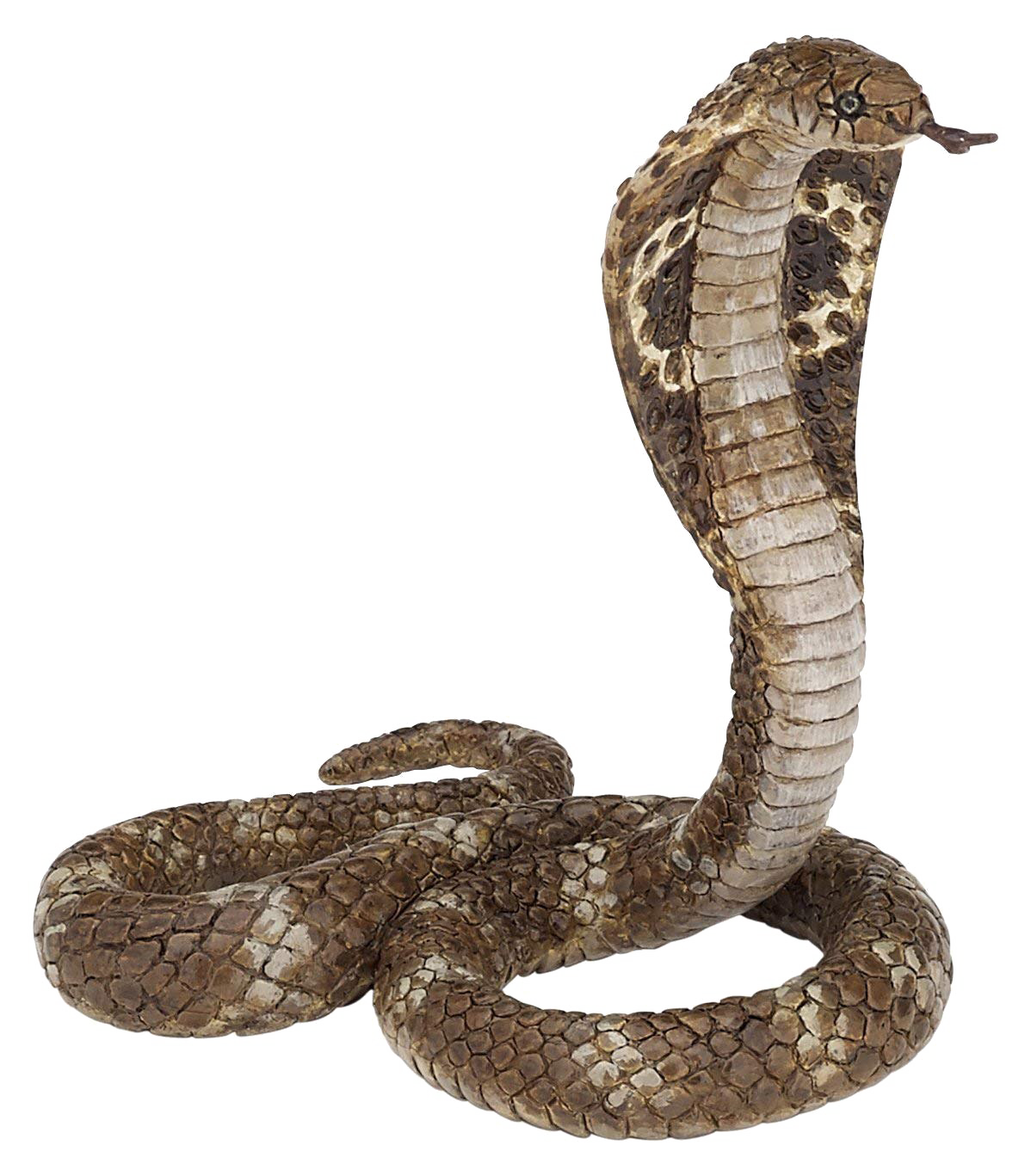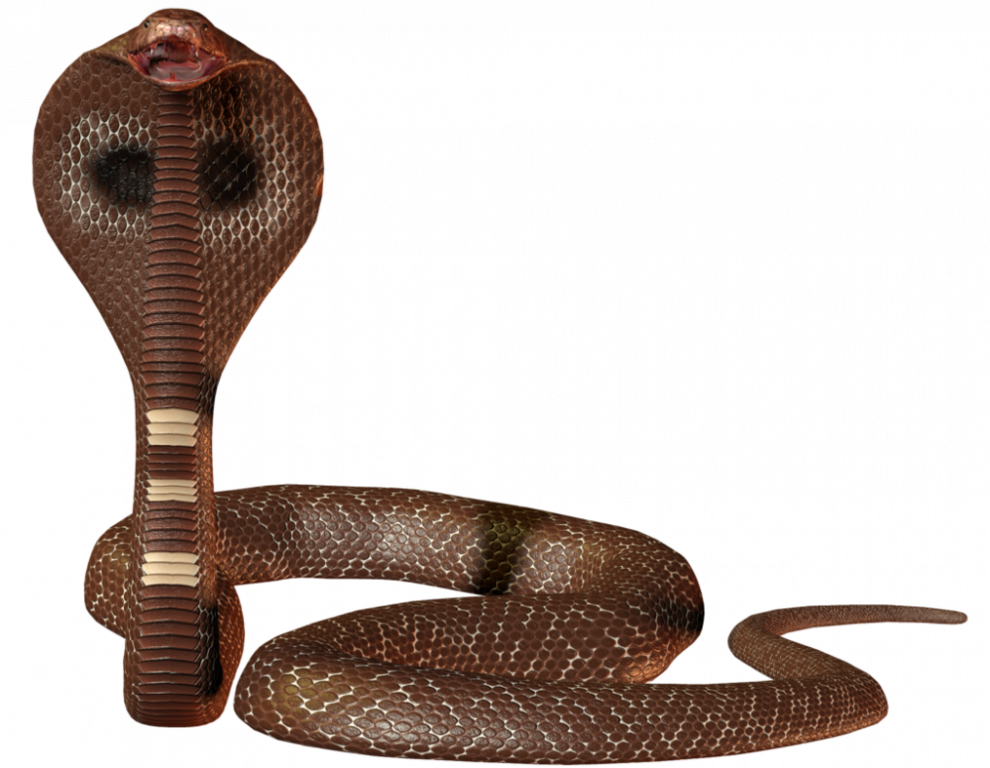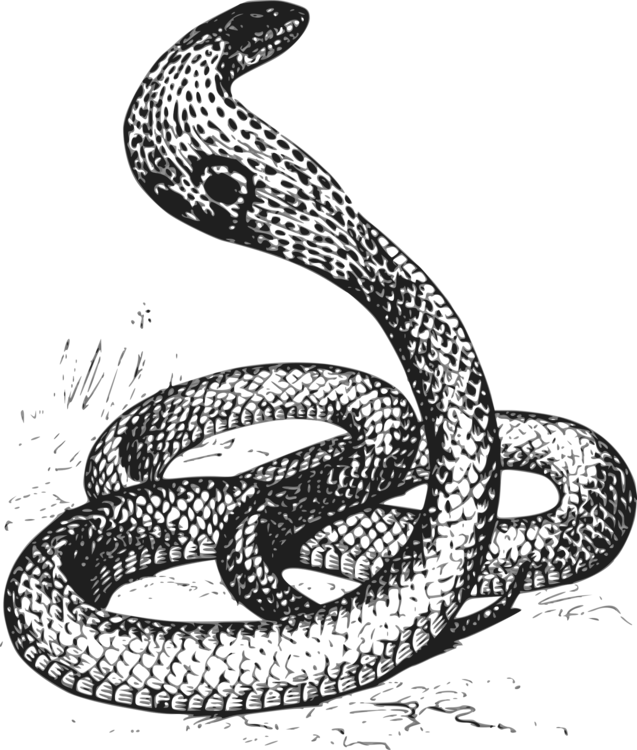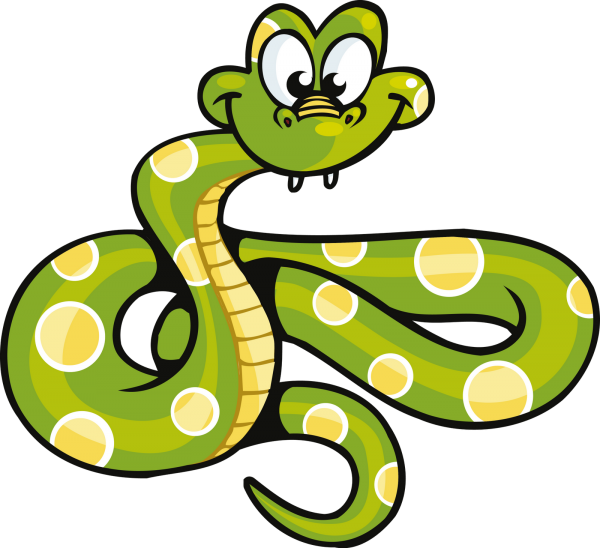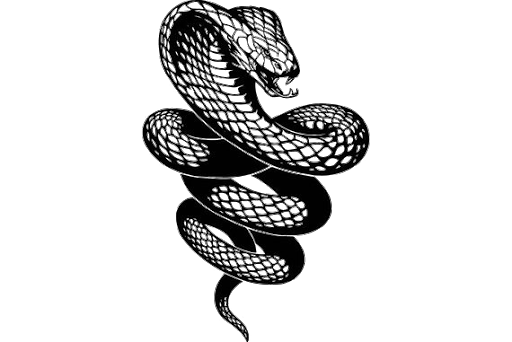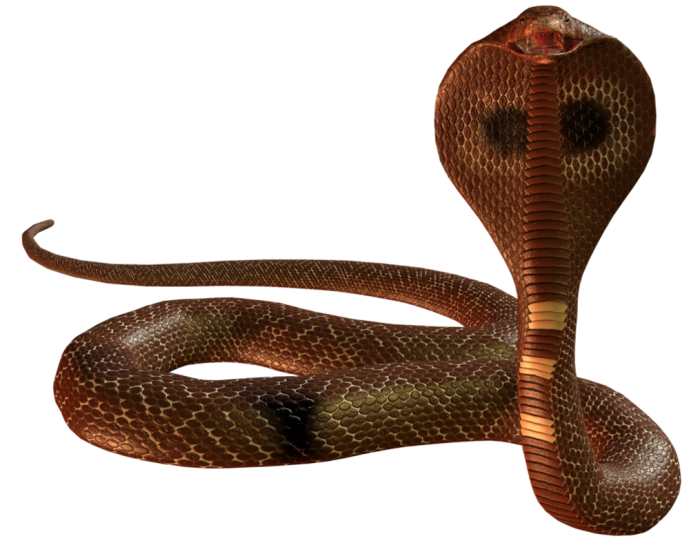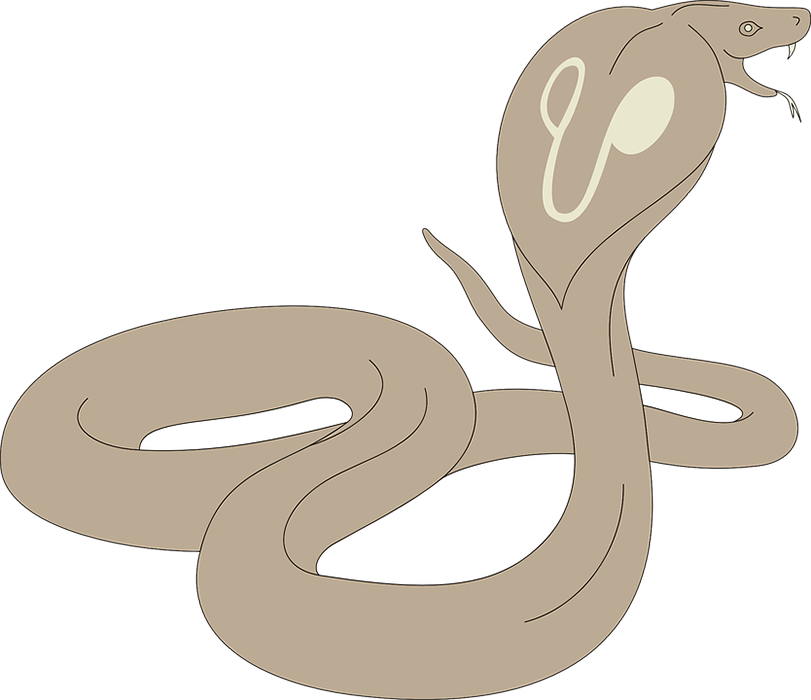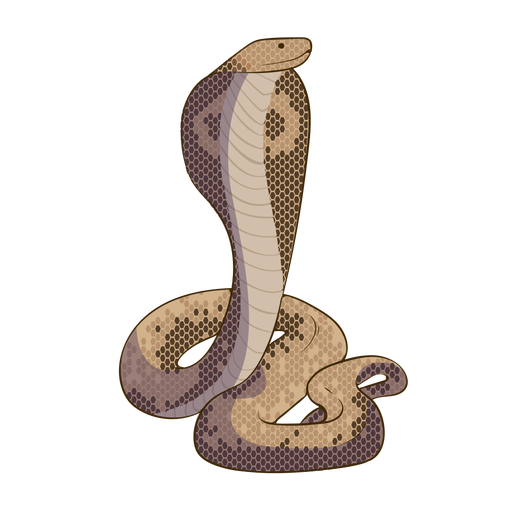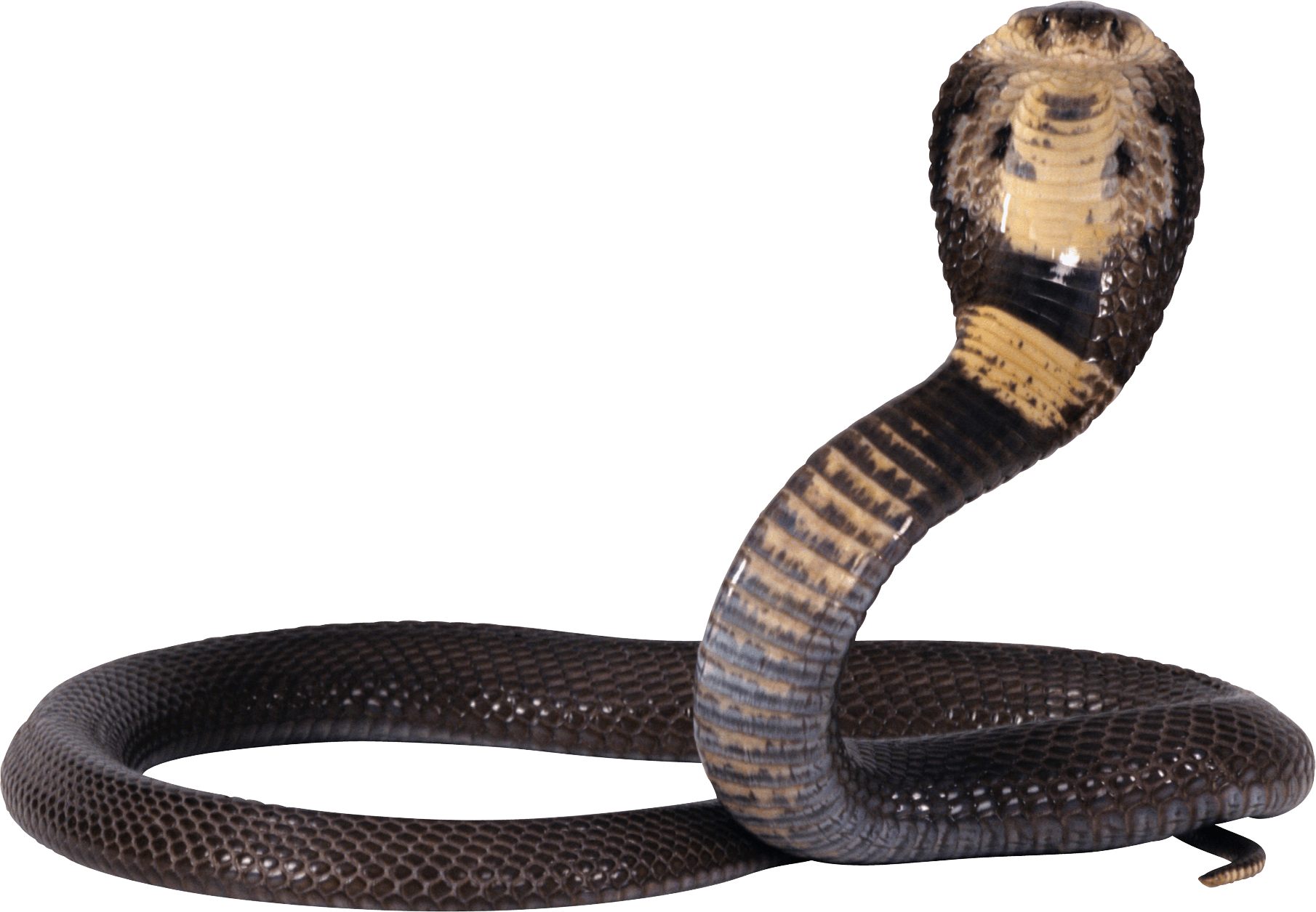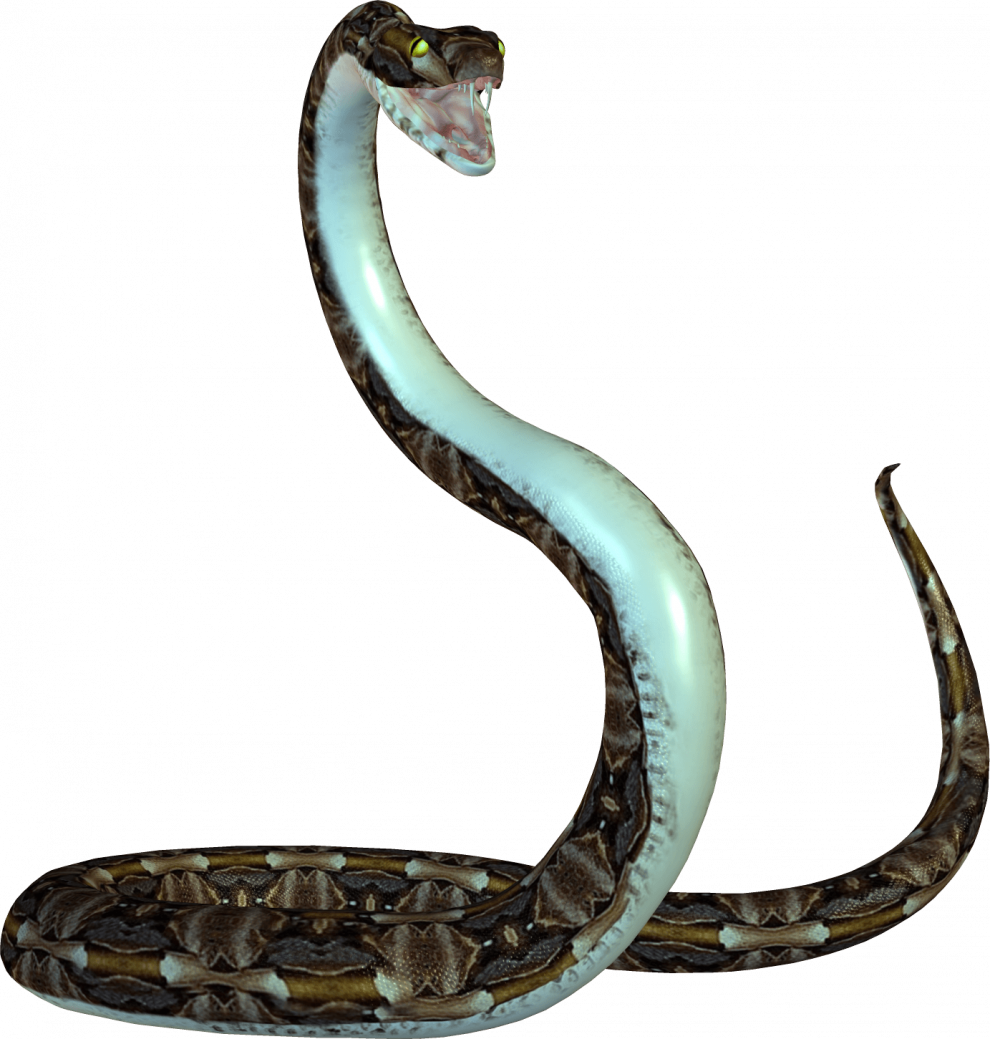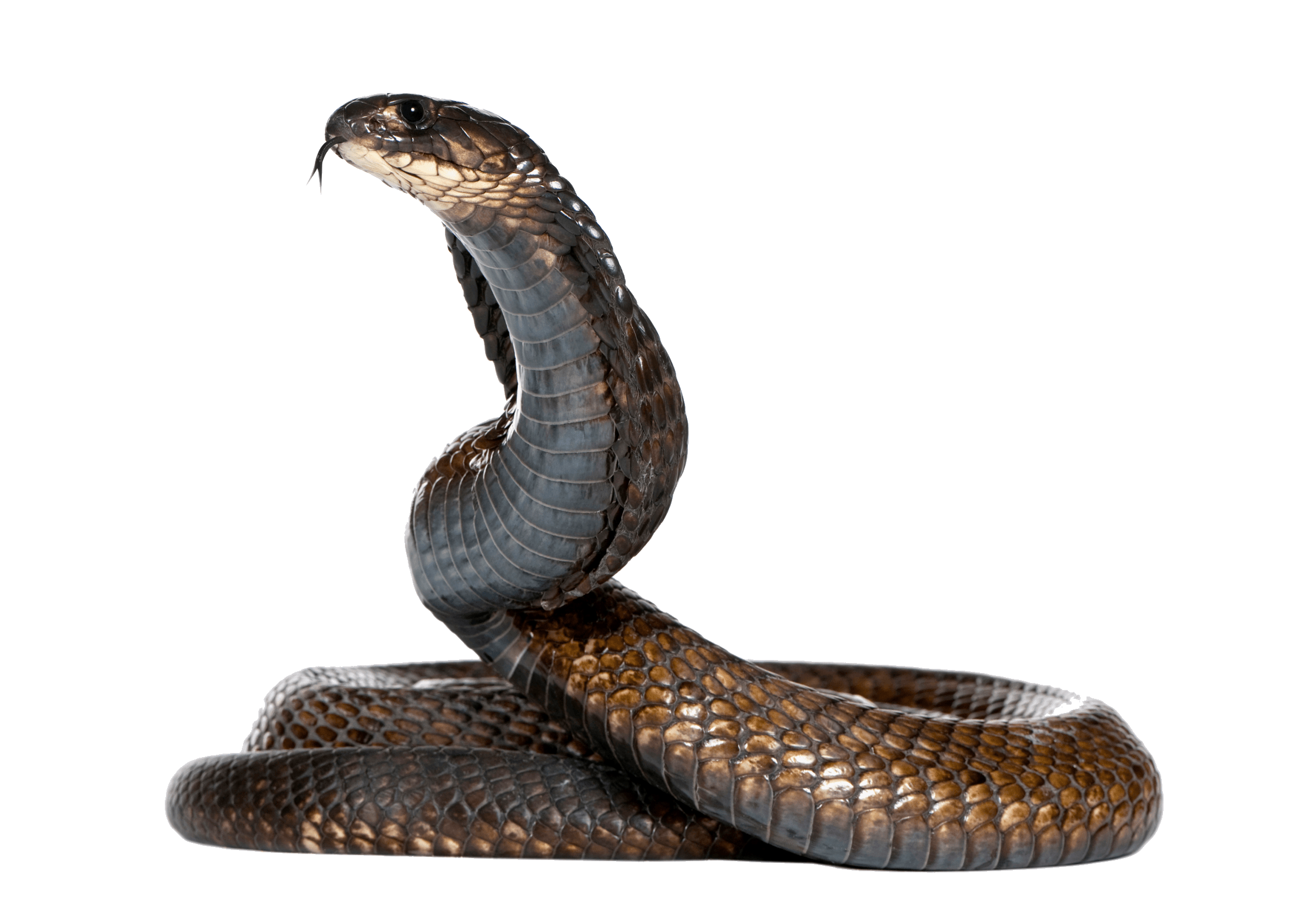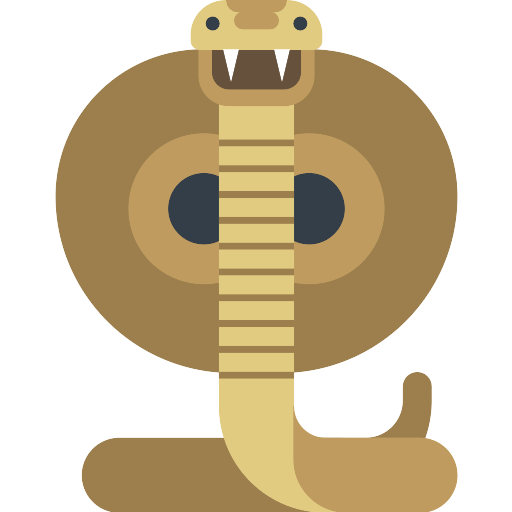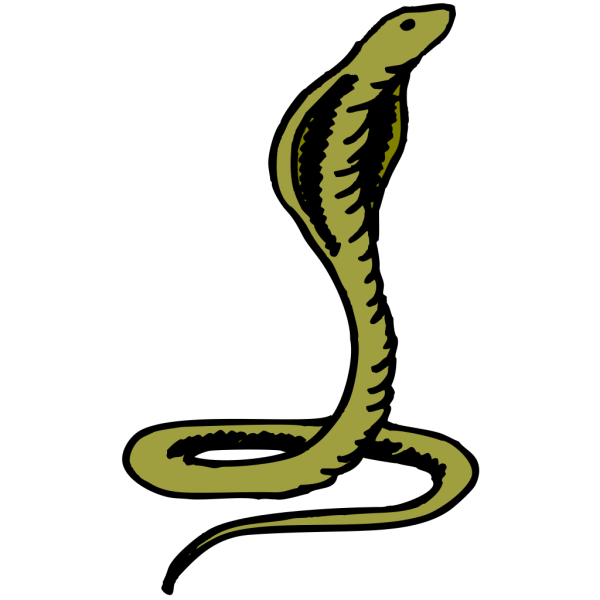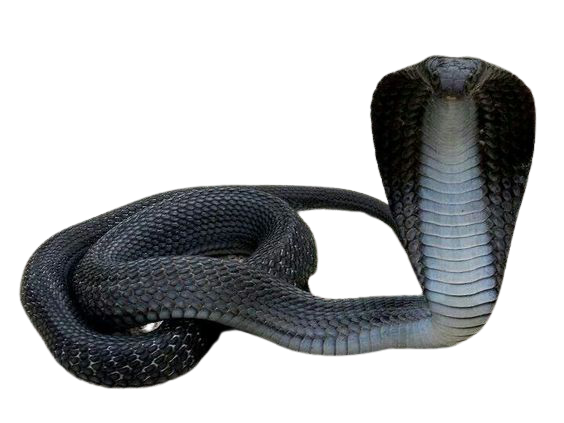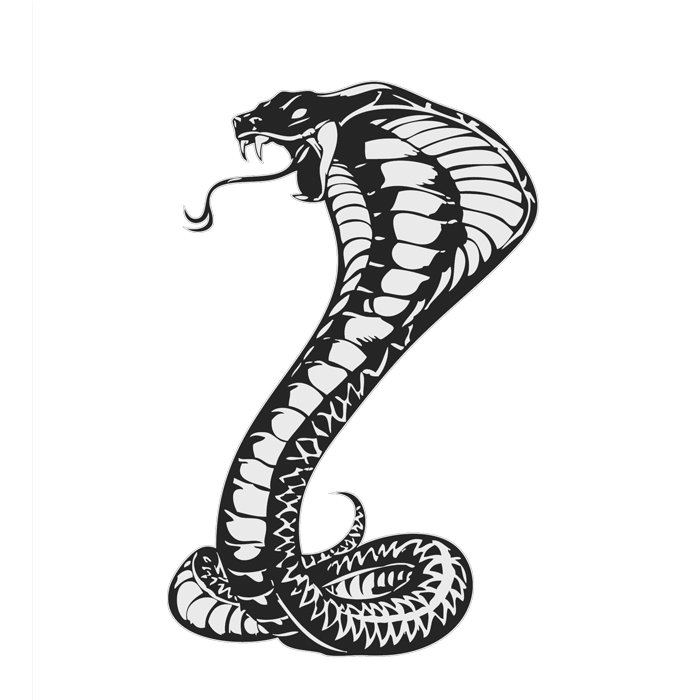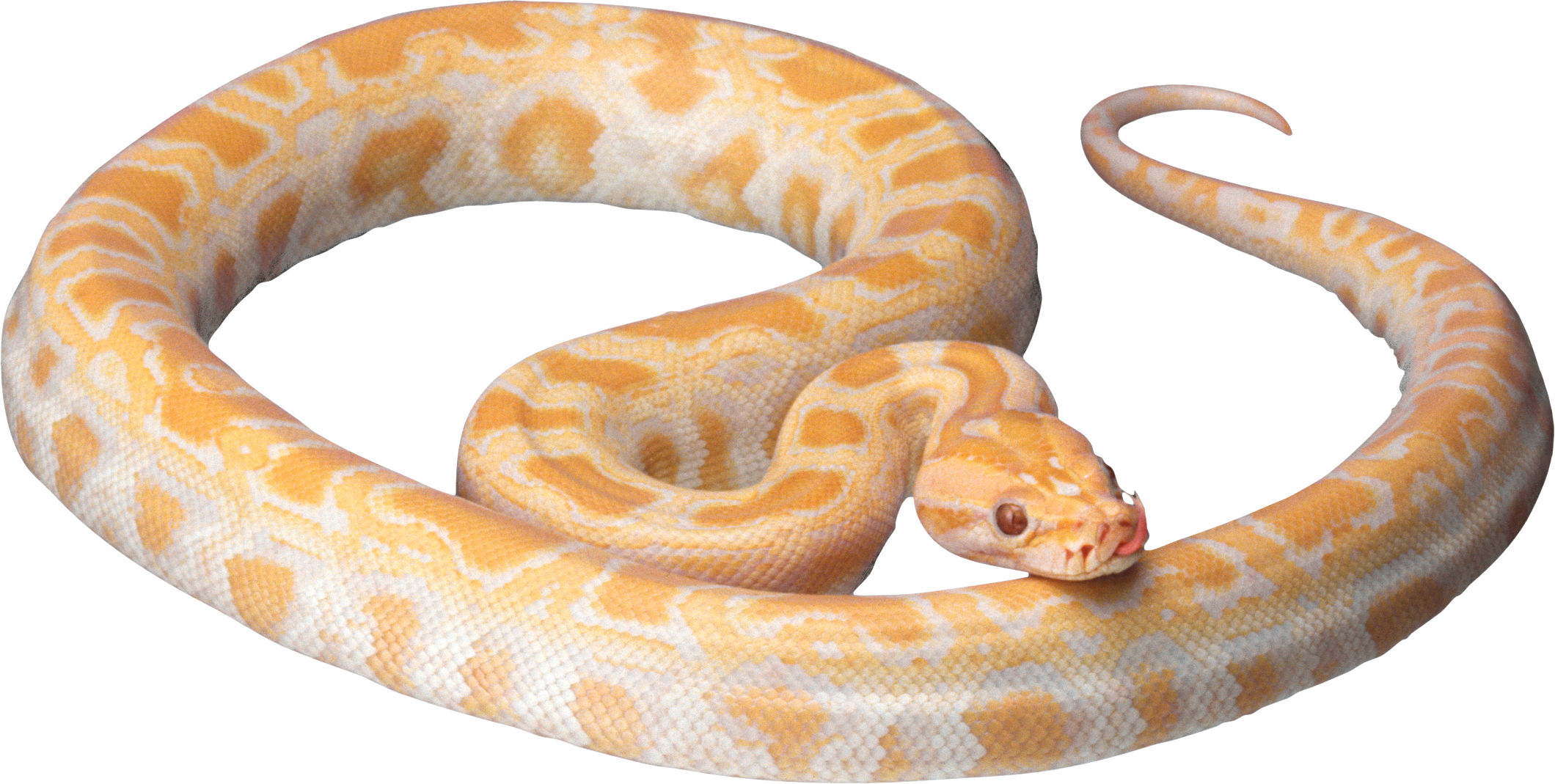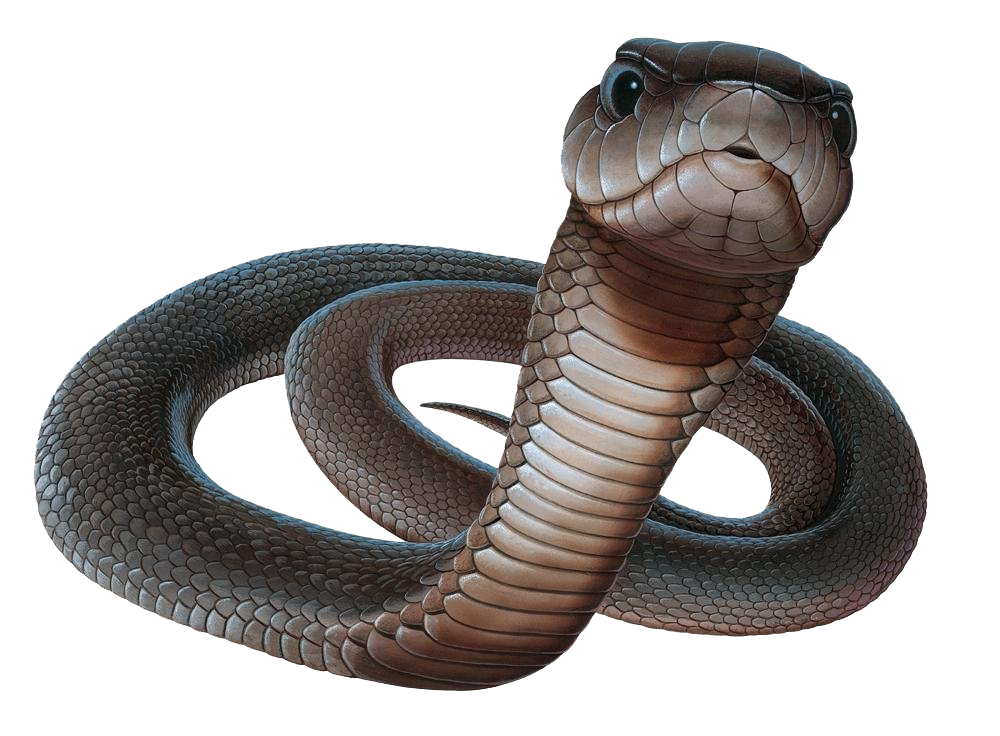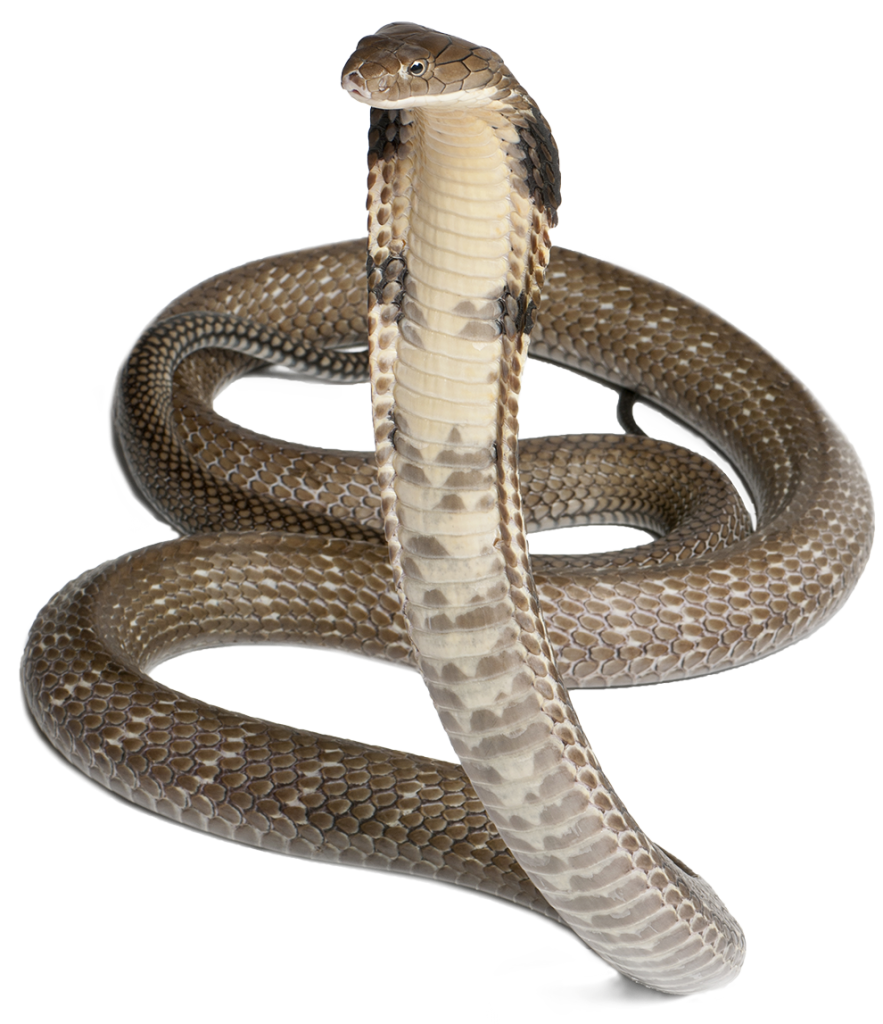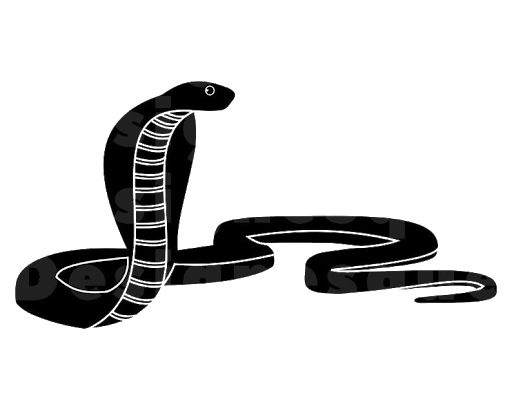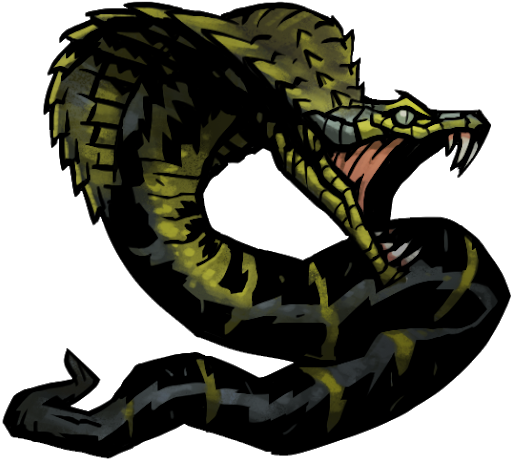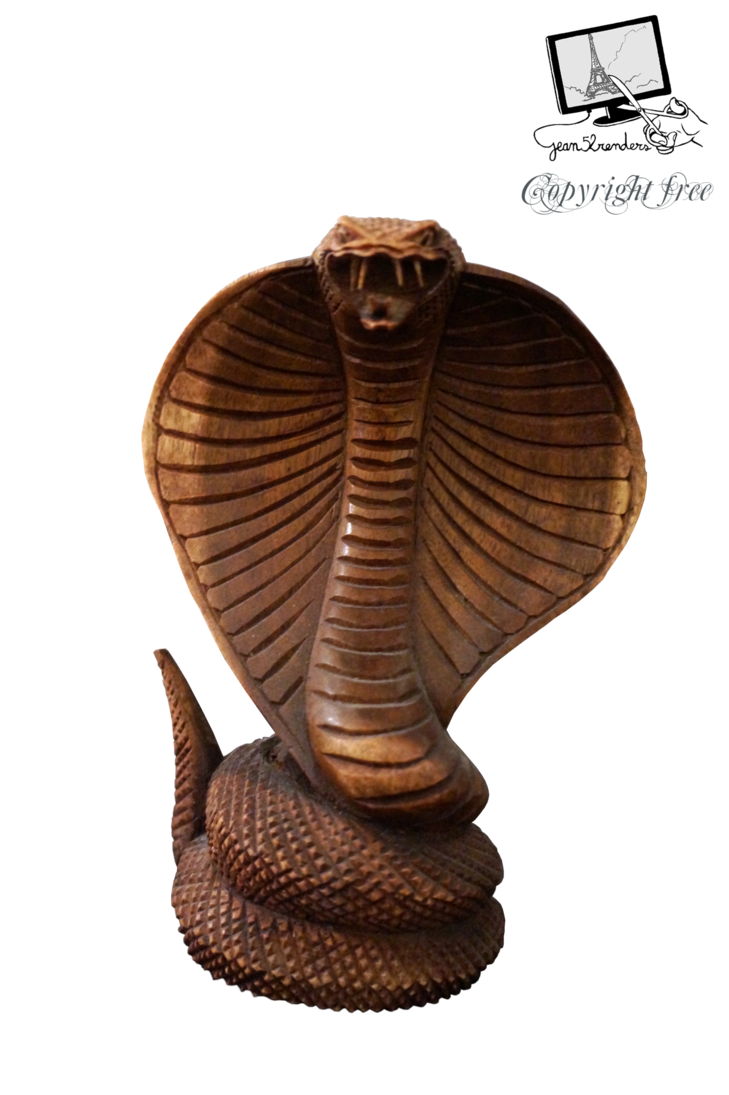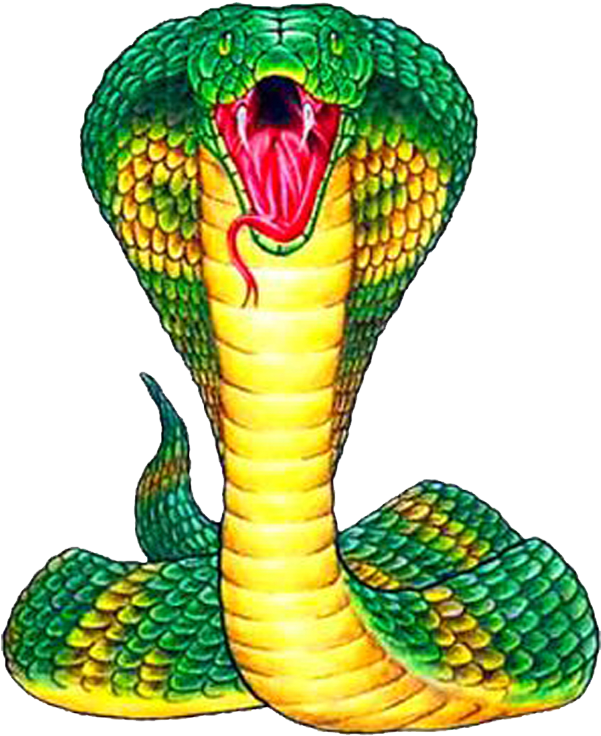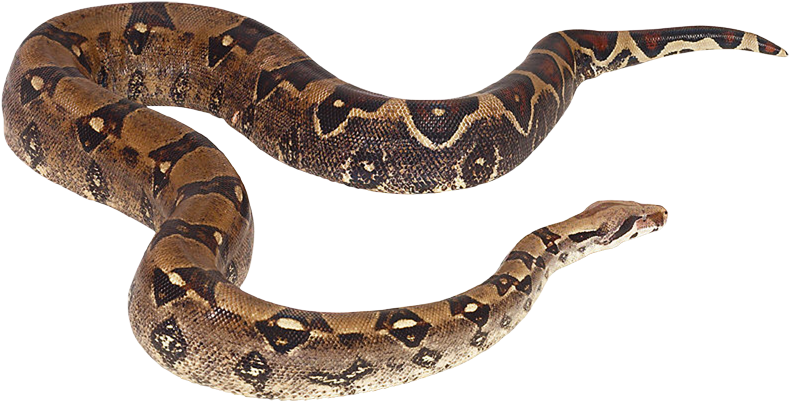Download top and best high-quality free Cobra PNG Transparent Images backgrounds available in various sizes. To view the full PNG size resolution click on any of the below image thumbnail.
License Info: Creative Commons 4.0 BY-NC
The king cobra is a poisonous snake species of the elapids family that is only found in the rainforests of Southeast Asia. It is the only cobra in the genus Ophiophagus, and it is distinguished from other cobras by its size and neck markings. With an average length of 3.18 to 4 m (10.4 to 13.1 ft) and a maximum length of 5.85 m, the king cobra is the world’s longest poisonous snake (19.2 ft). The color of its skin varies according on the environment, ranging from black with white streaks to a uniform brownish grey. It mostly eats other snakes, even its own kind. It seldom hunts non-reptile creatures like rodents and lizards, unlike other snakes.
The king cobra’s threat show comprises widening its neck-flap, lifting its head erect, puffing, and hissing, just like most cobras and mambas. Despite its fearsome reputation, the king cobra prefers to avoid human contact if possible. When provoked, it is capable of striking a target from a great distance and from a great height. Instead of biting and fleeing, it may hold its bite and inject a huge amount of venom, causing a medical problem.
This species, which is considered India’s national reptile, holds a prominent place in Indian mythology and folklore, as well as Sri Lankan and Myanmarese folklore. The king cobra has been categorized as Vulnerable on the IUCN Red List since 2010, due to habitat degradation.
Hamadryas hannah was the scientific name given to four king cobra specimens taken in the Sundarbans and one near Kolkata by Danish naturalist Theodore Edward Cantor in 1836. Hermann Schlegel, who described a king cobra zoological specimen from Java in 1837, offered the name Naja bungarus. Cantor suggested the name Hamadryas ophiophagus for the king cobra in 1838, explaining that it exhibits dental characteristics that fall in between Naja and Bungarus. Walter Elliot offered Naia vittata in 1840, which was a king cobra captured offshore near Chennai and floating in a basket. Albert Günther proposed Hamadryas elaps in 1858 based on king cobra specimens from the Philippines and Borneo. Both N. bungarus and N. vittata were termed H. elaps by Günther. Günther proposed the genus Ophiophagus in 1864. Its name comes from its proclivity for eating snakes.
Naja ingens, a king cobra collected in Tebing Tinggi in northern Sumatra, was presented by Alexander Willem Michiel van Hasselt in 1882.
Charles Mitchill Bogert, who maintained that it differed considerably from Naja species, recognized Ophiophagus hannah as a legitimate name for the king cobra in 1945. The king cobra, rather than the Naja cobras, was an early branch of a genetic lineage that gave rise to the mambas, according to cytochrome b and multigene research.
A phylogenetic examination of mitochondrial DNA revealed that specimens from the southern Thai provinces of Surattani and Nakhon Si Thammarat form a distinct clade from those from northern Thailand, which were grouped with specimens from Myanmar and Guangdong in southern China.
Download Cobra PNG images transparent gallery.
- Cobra PNG Free Image
Resolution: 900 × 1184
Size: 1251 KB
Image Format: .png
Download
- Cobra Background PNG
Resolution: 1141 × 1600
Size: 1032 KB
Image Format: .png
Download
- Cobra Viper
Resolution: 948 × 659
Size: 515 KB
Image Format: .png
Download
- Cobra Snake Transparent
Resolution: 708 × 586
Size: 464 KB
Image Format: .png
Download
- Cobra Snake PNG Pic
Resolution: 1438 × 1614
Size: 383 KB
Image Format: .png
Download
- Cobra Viper PNG Image
Resolution: 997 × 1025
Size: 401 KB
Image Format: .png
Download
- Cobra PNG Image File
Resolution: 512 × 512
Size: 26 KB
Image Format: .png
Download
- Cobra PNG HD Image
Resolution: 648 × 322
Size: 55 KB
Image Format: .png
Download
- Cobra Snake PNG File
Resolution: 641 × 396
Size: 221 KB
Image Format: .png
Download
- Cobra PNG Picture
Resolution: 487 × 600
Size: 393 KB
Image Format: .png
Download
- Cobra Animal PNG Image
Resolution: 489 × 357
Size: 140 KB
Image Format: .png
Download
- Cobra Snake PNG HD Image
Resolution: 1024 × 1024
Size: 547 KB
Image Format: .png
Download
- Cobra PNG Image HD
Resolution: 1500 × 664
Size: 481 KB
Image Format: .png
Download
- Cobra Snake PNG
Resolution: 580 × 380
Size: 210 KB
Image Format: .png
Download
- Cobra Snake PNG Image
Resolution: 590 × 509
Size: 83 KB
Image Format: .png
Download
- Cobra PNG Background
Resolution: 480 × 600
Size: 306 KB
Image Format: .png
Download
- Cobra Snake PNG Photo
Resolution: 710 × 531
Size: 101 KB
Image Format: .png
Download
- Cobra Animal Transparent
Resolution: 473 × 980
Size: 14 KB
Image Format: .png
Download
- Cobra Snake PNG Images
Resolution: 630 × 630
Size: 74 KB
Image Format: .png
Download
- Cobra Transparent
Resolution: 1920 × 1366
Size: 78 KB
Image Format: .png
Download
- Cobra Animal PNG File
Resolution: 1196 × 1400
Size: 1014 KB
Image Format: .png
Download
- Cobra Animal PNG Photos
Resolution: 1060 × 980
Size: 29 KB
Image Format: .png
Download
- Cobra Animal PNG Images
Resolution: 826 × 980
Size: 23 KB
Image Format: .png
Download
- Cobra Animal
Resolution: 1399 × 1248
Size: 1322 KB
Image Format: .png
Download
- Cobra Animal PNG Picture
Resolution: 600 × 388
Size: 236 KB
Image Format: .png
Download
- Cobra PNG Clipart
Resolution: 1198 × 1367
Size: 1226 KB
Image Format: .png
Download
- Cobra Viper PNG Pic
Resolution: 990 × 768
Size: 699 KB
Image Format: .png
Download
- Cobra PNG Images HD
Resolution: 637 × 750
Size: 292 KB
Image Format: .png
Download
- Cobra PNG Photos
Resolution: 600 × 548
Size: 168 KB
Image Format: .png
Download
- Cobra Animal PNG Cutout
Resolution: 512 × 342
Size: 106 KB
Image Format: .png
Download
- Cobra PNG Cutout
Resolution: 700 × 543
Size: 365 KB
Image Format: .png
Download
- Cobra PNG Image
Resolution: 811 × 700
Size: 143 KB
Image Format: .png
Download
- Cobra Snake PNG Picture
Resolution: 512 × 512
Size: 137 KB
Image Format: .png
Download
- Cobra Snake PNG Cutout
Resolution: 1810 × 1255
Size: 549 KB
Image Format: .png
Download
- Cobra Snake
Resolution: 990 × 1039
Size: 793 KB
Image Format: .png
Download
- Cobra Animal PNG Pic
Resolution: 2236 × 1564
Size: 563 KB
Image Format: .png
Download
- Cobra Animal PNG Clipart
Resolution: 2662 × 918
Size: 29 KB
Image Format: .png
Download
- Cobra Snake PNG Image HD
Resolution: 512 × 512
Size: 21 KB
Image Format: .png
Download
- Cobra Snake PNG Photos
Resolution: 600 × 600
Size: 39 KB
Image Format: .png
Download
- Cobra Viper PNG Photo
Resolution: 564 × 423
Size: 203 KB
Image Format: .png
Download
- Cobra PNG
Resolution: 512 × 512
Size: 16 KB
Image Format: .png
Download
- Cobra Animal PNG
Resolution: 700 × 700
Size: 93 KB
Image Format: .png
Download
- Cobra Snake PNG Clipart
Resolution: 2120 × 1069
Size: 3167 KB
Image Format: .png
Download
- Cobra No Background
Resolution: 1000 × 736
Size: 683 KB
Image Format: .png
Download
- Cobra PNG Photo
Resolution: 883 × 1024
Size: 910 KB
Image Format: .png
Download
- Cobra PNG Images
Resolution: 512 × 409
Size: 56 KB
Image Format: .png
Download
- Cobra PNG File
Resolution: 512 × 461
Size: 159 KB
Image Format: .png
Download
- Cobra
Resolution: 729 × 1095
Size: 566 KB
Image Format: .png
Download
- Cobra Viper PNG File
Resolution: 601 × 736
Size: 789 KB
Image Format: .png
Download
- Cobra PNG Pic
Resolution: 789 × 401
Size: 432 KB
Image Format: .png
Download
